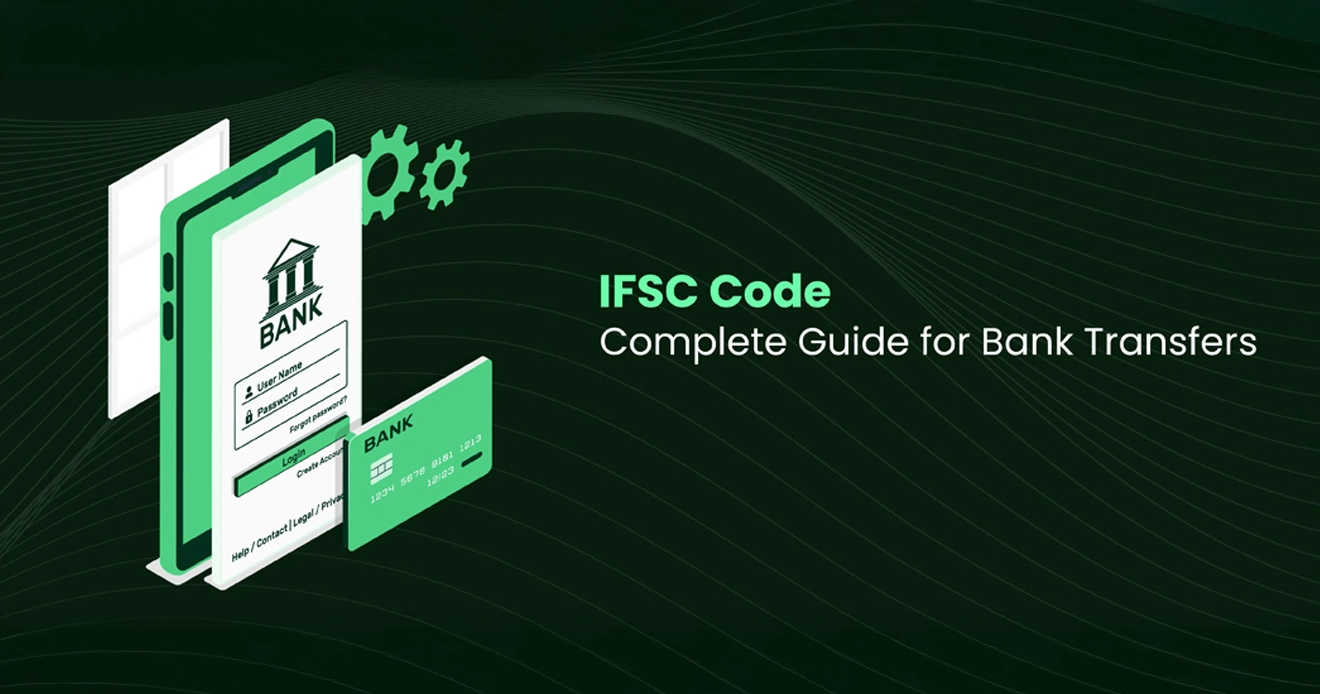Efficient and accurate bank transfers are essential when it comes to your hard-earned money, whether you’re sending money to a friend or receiving payments for your business. Knowing how to use different bank transfer methods can save you time and help you avoid potential errors.
One key component of this system, particularly in India, is the IFSC code. But what is IFSC, and how does it work? Let us explain everything you need to know about IFSC codes, their meaning, and how to find them.
What is IFSC?
The Indian Financial System Code (IFSC) is a unique 11-character alphanumeric code used to identify individual bank branches participating in various electronic payment systems in India, such as the Real-Time Gross Settlement (RTGS), National Electronic Funds Transfer (NEFT), and Immediate Payment Service (IMPS). Essentially, the IFSC ensures that your money reaches the correct bank branch when you make a transfer.
IFSC code meaning
To understand what IFSC code is, it’s helpful to break down its structure:
IFSC codes have 11 characters and are comprised of the following characters: XXXX0YYYYY
-
Bank code: The first four characters are the alphabetical representation of the bank’s name. For instance, the code for the State Bank of India starts with ‘SBIN.’
-
Zero: The fifth character is always ‘0’, which is reserved for future use.
-
Branch code: The last six characters (YYYYYY) can be numeric or alphabetic and denote the specific branch of the bank.
Importance of IFSC codes
IFSC codes are crucial for several reasons as they have made bank transfers easy and accessible for everyone. Now that we have understood what is IFSC code, here are some of the reasons why it is important:
-
Accurate transactions: They ensure that funds are transferred accurately to the intended branch.
-
Electronic payments: They facilitate electronic fund transfers through RTGS, NEFT, and IMPS.
-
Bank identification: They help in identifying the source and destination banks in the transfer process.
How to find IFSC code
If you are also searching “how to find IFSC code” on the internet, then follow these steps. An IFSC code is straightforward. Here are several ways to do it:
-
Bank cheque: The easiest way to find out your IFSC code is by checking your bank checkbook. The IFSC code is usually printed on the top left corner of the cheque leaf.
-
Bank passbook: Many banks print the IFSC code on the first page of the passbook.
-
Bank website: You can find the IFSC codes on the official websites of the respective banks.
-
RBI website: The Reserve Bank of India (RBI) maintains a comprehensive list of IFSC codes for all banks.
-
Online IFSC code finders: Several websites and apps provide IFSC code lookup services.
Types of Electronic Funds Transfers Using IFSC
Electronic funds transfer is one of the most convenient methods to transfer money and there are many different ways in which you can do one. Here are the different kinds of fund transfers:
1. Real-time Gross Settlement (RTGS)
RTGS is used for high-value transactions. The funds are transferred in real time and on a gross basis, meaning that the transactions are settled individually. This system is ideal for large payments where immediate clearing is required.
Transactions processed via RTGS are settled individually, in real-time, rather than in batches. This means that as soon as a transaction is initiated, it is processed and settled on an order-by-order basis without bundling with other transactions. This immediacy is what makes RTGS particularly valuable for urgent and high-value payments.
2. National Electronic Funds Transfer (NEFT)
The National Electronic Funds Transfer (NEFT) system is a nationwide payment system that facilitates one-to-one funds transfers.
Unlike RTGS, NEFT transactions are settled in batches, making them suitable for transferring smaller amounts where immediate settlement isn’t critical. By using NEFT, individuals, companies, and organizations can electronically transfer funds from any bank branch to any other bank branch that is part of the NEFT network in India.
Immediate Payment Service (IMPS)
Immediate Payment Service (IMPS) is a real-time electronic fund transfer service available 24/7, including weekends and holidays. It allows people and businesses to transfer funds instantly across banks within India, ensuring that the recipient receives the money in real-time.
Developed by the National Payments Corporation of India (NPCI), IMPS is known for its speed, reliability, and ease of use. It offers instant, 24×7 interbank electronic fund transfer service through mobile phones, which is highly beneficial for urgent and low-value payments.
Steps to make an online bank transfer using IFSC code
Here’s a step-by-step guide on how to make an online bank transfer using an IFSC code:
Step 1: Log in to your online banking : Access your bank’s online banking portal or mobile app.
Step 2: Navigate to fund transferm : Select the fund transfer option.
Step 3: Choose the transfer type : Depending on the urgency and amount, choose RTGS, NEFT, or IMPS.
Step 4: Enter beneficiary details : Provide the beneficiary’s name, bank account number, and the IFSC code of the beneficiary’s branch.
Step 5: Enter the amount : Specify the amount you wish to transfer.
Step 6: Review and confirm : Review the details entered, confirm the transaction, and authorize it using your OTP or transaction password.
Common mistakes to avoid while making IFSC transactions
To ensure smooth transactions, avoid these common mistakes:
-
Incorrect IFSC code: Double-check the IFSC code, as an incorrect code can lead to transaction failures or misdirected funds
-
Wrong account number: Ensure the beneficiary’s account number is correct
-
Amount limitations: Be aware of the transfer limits for RTGS, NEFT, and IMPS
The power of IFSC in modern-day banking
Understanding what is IFSC and how it functions is fundamental to carrying out secure and accurate bank transfers in India. The IFSC code ensures that funds are directed to the correct bank branch, facilitating smooth and efficient transactions.
Whether you’re a business owner handling multiple transactions daily or an individual making occasional transfers, knowing how to find the IFSC code and using it correctly can save you time and prevent errors.

